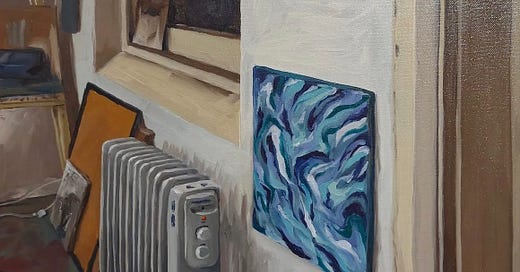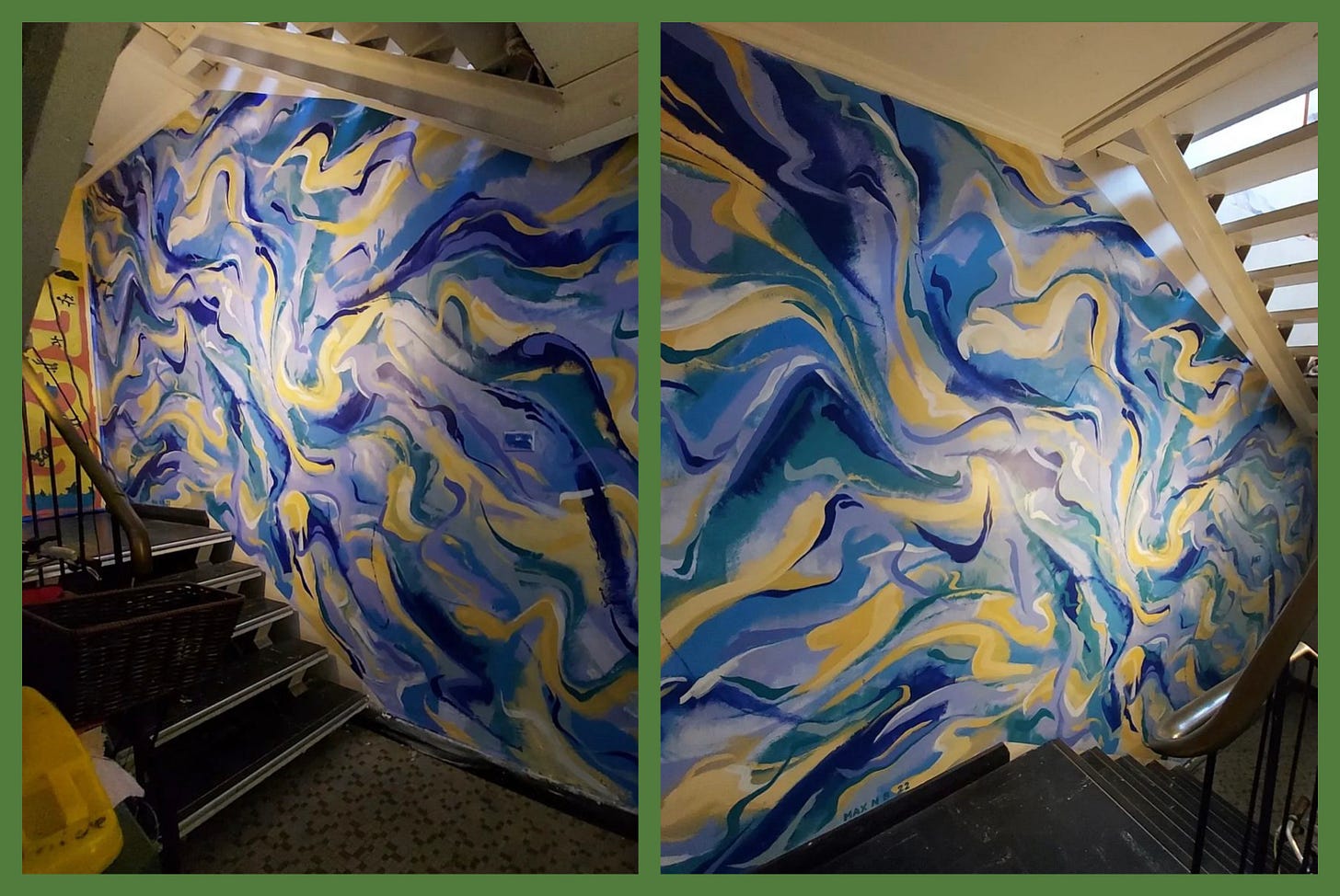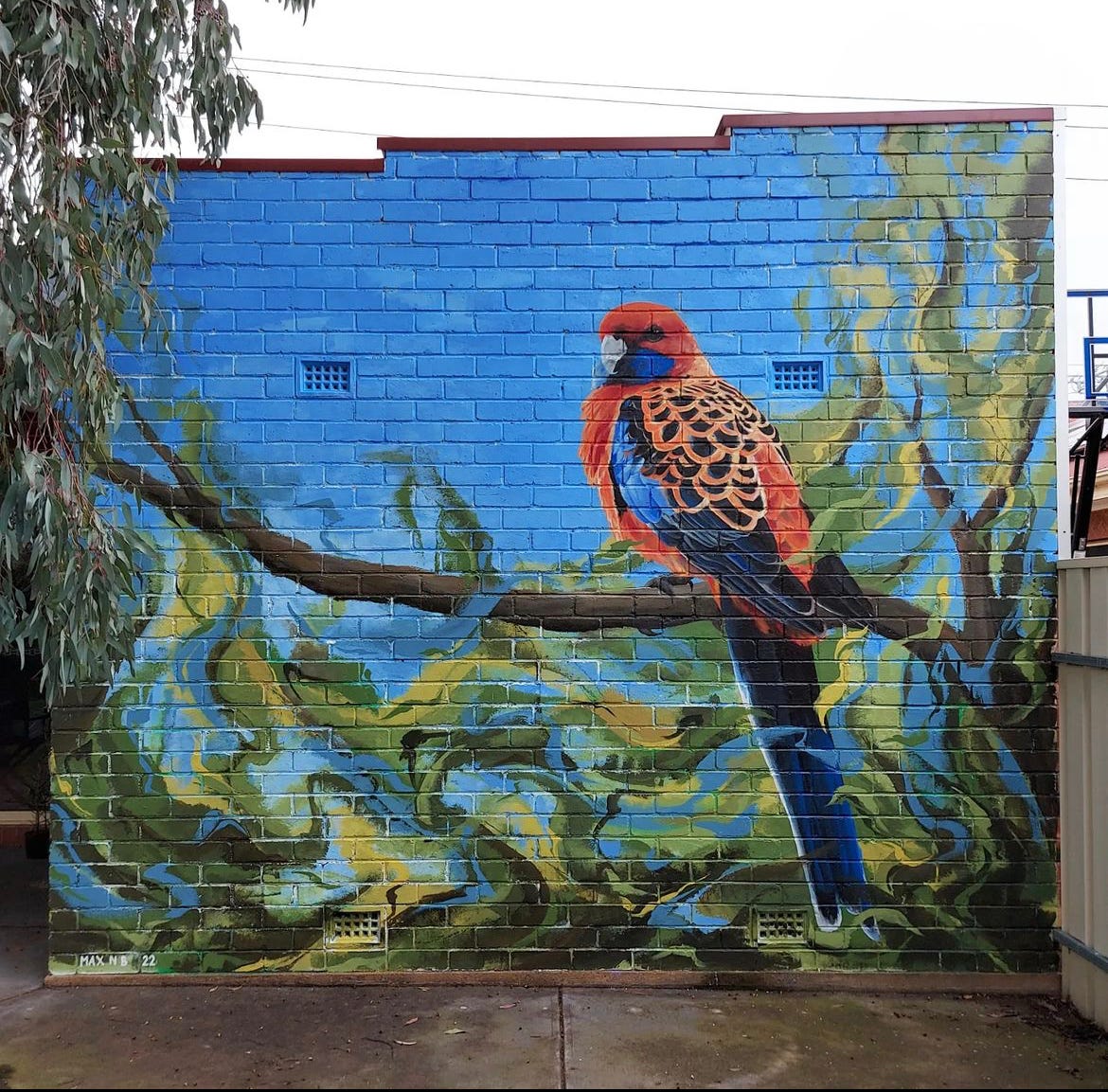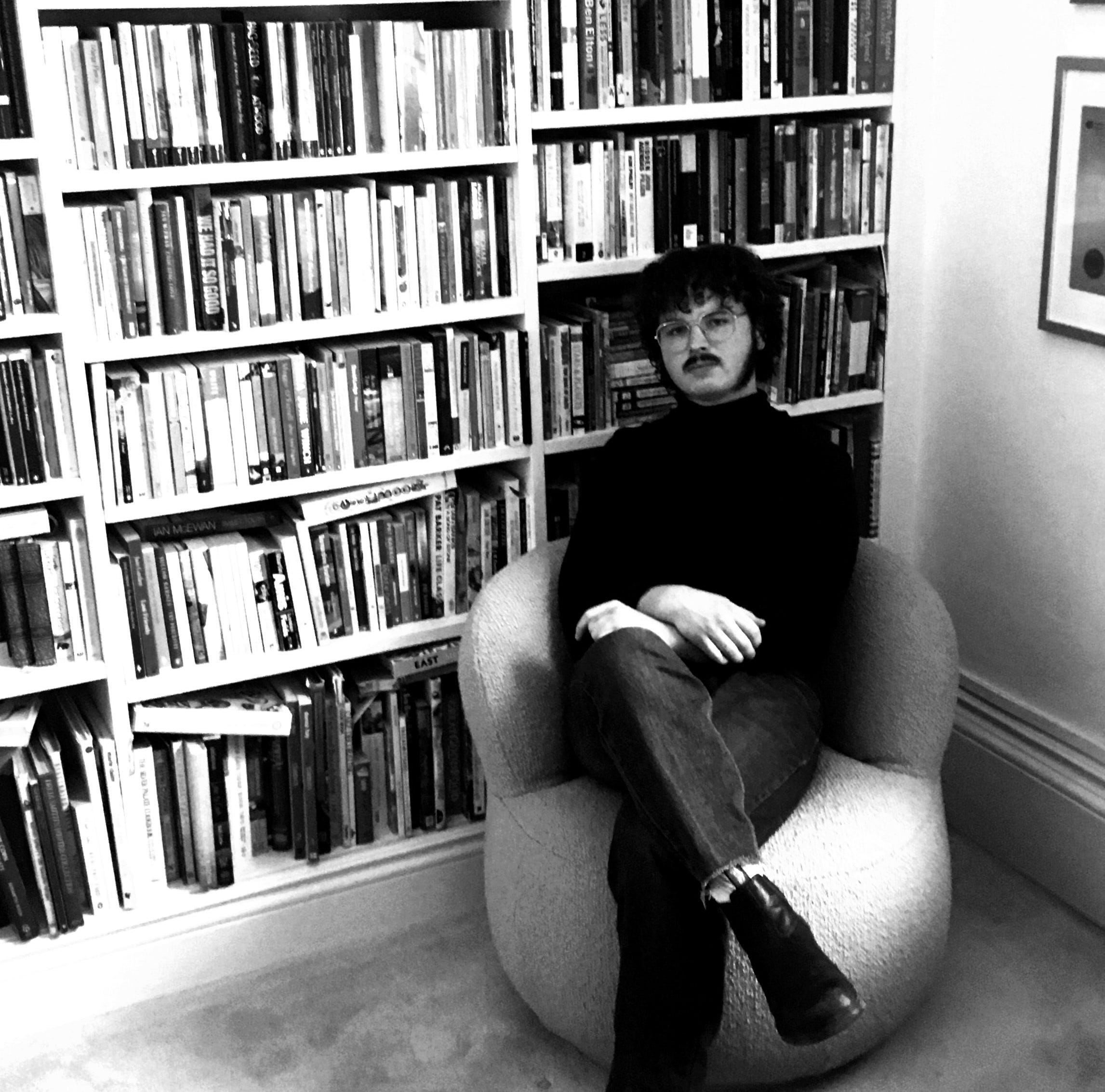Discovering the Extraordinary in the Mundane
Exploring structure, memory, and nostalgia with local painter Max Ballard
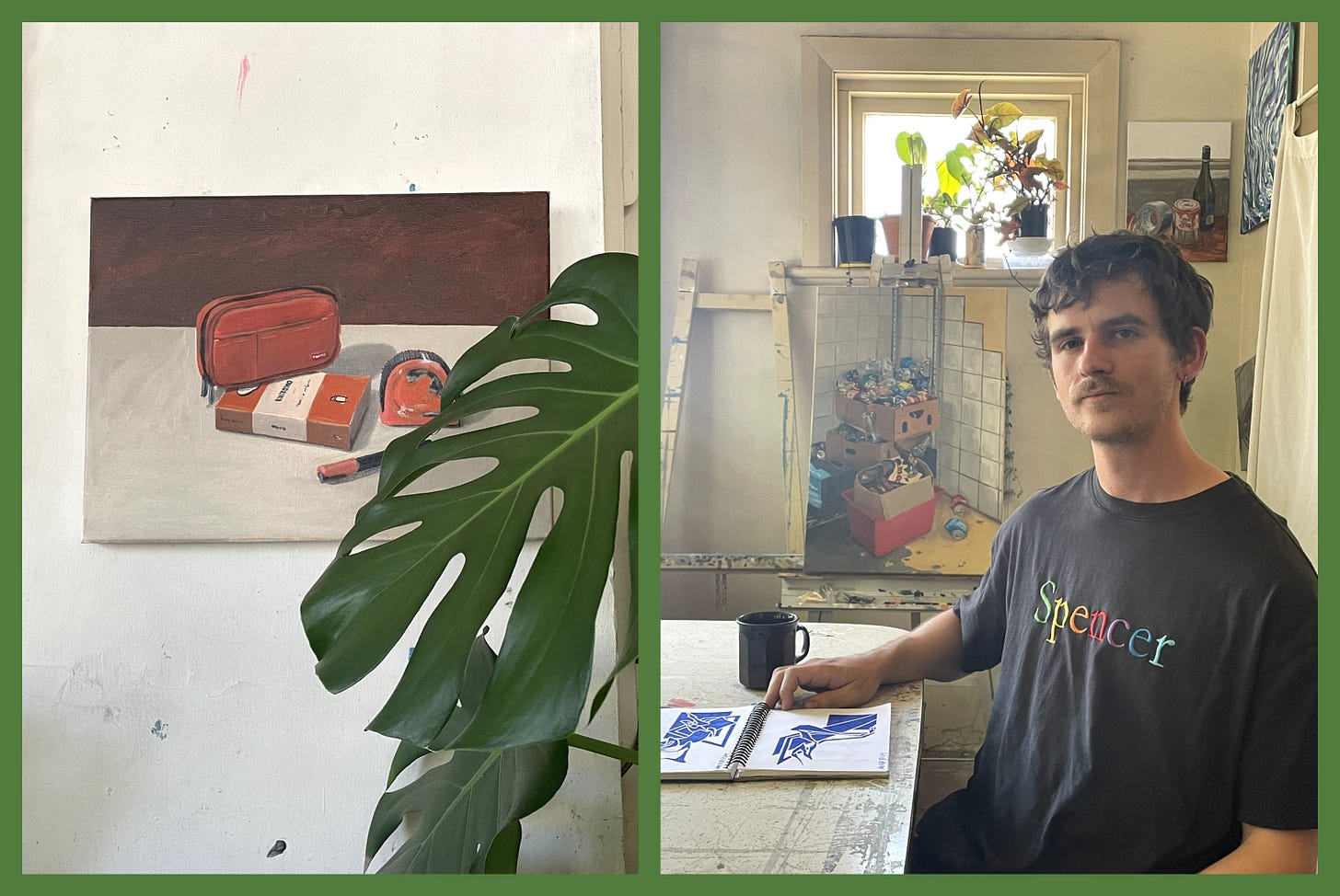
When my mum worked for UniSA, I’d occasionally go visit her office in the Jeffrey Smart Building at City West. The walls were regularly decorated with paintings by the late-great Australian artist, known for his distinctive style of urban and suburban landscapes, often depicting scenes of highways, industrial areas, and city streets with methodical attention to detail and a focus on geometric forms and perspectives. A decade after his passing, Jeffrey Smart’s paintings continue to gather widespread acclaim for their unique blend of realism and abstraction, his ability to evoke both familiarity and estrangement in the viewer, as well as the palpable sense of human presence through the meticulous portrayal of architecture and infrastructure.

This brings me to local painter Max Ballard, who cites Smart as one of the crucial influences upon his artistic style. Max is an oil painter and mural artist based in Adelaide on Kaurna Land, who splits his practice “between abstract painting and representational still life work”, primarily illustrating the contents of his North Adelaide apartment.
I met Max at the Druid Fluids album launch at ODDIO in Bowden late last year and quickly discovered that he lived around the corner from me. We went for coffee a few days later, and have since developed a strong friendship, hanging out regularly at the Grace Emily or in his apartment above one of the Thai restaurants on O’Connell Street. The apartment, which he shares with talented local artists Lucinda Penn and Harry Gent, is embellished from floor to ceiling with paintings, prints, murals, framed photographs, and more plants than I’ve been able to count. When you enter the apartment and head up to the living room, there’s a fantastic mural covering the walls in the stairwell that Max, Lucinda, and some of their friends painted collaboratively. The stairwell was separated into different sections, each displaying distinct styles, patterns, and techniques. Max painted three of these walls, wielding both abstract and geometric designs to mark his artistic territory upon the walls of his home.
Spread across acrylic and oil pieces on canvas to large scale murals, Max’s paintings often explore the tension and harmony between structure and free-flowing forms. I recently had the opportunity to attend Max’s artist talk in the Yungondi exhibition space at UniSA Business School, as part of his exhibition entitled Structure. During his talk, he spoke about discovering Jeffrey Smart’s art during high school, when he was predominantly focusing on graffiti and abstract work. A week later, we sat down together in his home studio, and after setting up my high-tech audio equipment (the voice memos app on my phone), I asked him to elaborate on his idolisation of Smart:
“He has really influenced my artistic direction now. When I started painting more representational stuff, I was really fascinated by his compositions and the surreal aspect of these realistic scenes. Aside from connecting visually with his work, I think a reason why he was such a big influence on me is because of my transition from being obsessed with letter-based graffiti and then transitioning to painting buildings and objects.”
Max’s artistic journey was founded during childhood, when he used to draw obsessively, transitioning through phases of different styles until fixating upon graffiti, street art, and murals during his teenage years.
“For a few years I was very dedicated to that and it was all I could see myself doing. I was kind of being a bit of a ratbag as a teenager, without any realisation that being a mural artist was an actual career.”
In his late teenage years and early twenties, he spent a few years away from creative work during a period in which he “lost a lot of artistic direction”. It was through a graphic design degree at UniSA that he rediscovered his enthusiasm for painting. Being around other artists, including future housemate Lucinda, reignited his creativity and reintroduced the conviction that working as an artist was a feasible career path. As a keen observer of art, and a fan of Max’s style, I’m incredibly glad he found his artistic direction again.

Since completing his degree, Max has focused on “creating interesting compositions”, often working with straight lines, flat objects, rectangles, and geometric shapes to paint abstract, free-flowing artworks, abstract geometric designs, as well as the semi-realistic representational work inspired by Jeffrey Smart. By focusing on these styles, he’s been able to stay productive, inspired, and creatively liberated in his endeavour to “make work that makes people think about the work”.
Many of Max’s paintings are inspired by the objects of his local environment. It may be something he’s observed whilst walking around North Adelaide, or a particular area in his apartment, that lingers in his subconscious until arising a few days later as an idea for a future artwork. Recreating these observations, whether through abstract, geometric, or semi-realistic techniques, allows him to manipulate the contrasting perspectives of structure and natural design between plain geometric shapes and free-flowing forms. For example, on the day I interviewed Max, the painting he was working on depicted boxes of recyclable bottles and cans in the corner of his laundry, which can be viewed at the top of this article. I adore the contrast between the recognisable structure of the tiles on the wall, which feature straight lines and monotone colouring, compared to the more abstract concoction of bottles and cans, an amalgamation of many shapes and colours. The tiled wall is solid, understandable: a unified and time-resilient structure. Whereas the 10-cent recyclables are malleable, destructible, bent, disfigured, abstractified.
“When I think about that painting, I see all those cans and bottles as an area of texture and then, fundamentally, I see the painting as just as a contrast between perspectives and the visual connection in my mind between representational works and abstract work. I think of [the painting] as abstract, but the fact that it's made up of real objects just makes it so much more interesting. Yeah, and it ties into the idea of [the painting] being a puzzle. You look at a semi-realistic painting and you see the object. But if you take a minute to look at it, you can see the shapes that it's made up of. That’s the underlying composition and structure that I've thought about, and that I hope people can see.”

The notion of art functioning as a puzzle was something he’d drawn attention to earlier. During his artist talk at the Yungondi Gallery, Max spoke about the above painting of a stand-up radiator, pointing out the vertical brown stripes on the far-right. Before reading the next paragraph, try to take a few moments to scrutinise this area and deduce what is being depicted.
At first glance, the unsuspecting eye may only see vertical stripes. But a closer look at the painting’s dimensions and depth will reveal the side of a doorframe. The artwork embraces realism, but still leaves a great deal of interpretation up to the viewer. The design creates a puzzle to piece together in your head before you can truly register what you are looking at. Then, of course, the solution becomes rather obvious. But you had to first take the time to solve the puzzle to understand the greater picture. We exchanged similar views surrounding text-based graffiti, when I mentioned the occasional difficulty I experienced when trying to interpret the words a graffiti artist was spelling out.
“The thing with graffiti is that you're working with letter forms, but you're almost completely ignoring them. It's all about how they appear visually. You're just creating an interesting, almost abstract piece of work with letter forms. I think I felt a strong connection between [graffiti] and the way Jeffrey Smart's work creates really interesting abstract compositions from real objects.”
Yet when I eventually see the text on the wall for what it is, and thus solve the puzzle, I experience that same flooding sensation of understanding, appreciation, and relief that I felt when I finally saw the doorframe in Max’s piece. Perhaps I’m gushing and beginning to ramble, but as someone who can find puzzles a little frustrating, I get a real kick out of moments like that.

Many of Max’s recent works have explored themes of nostalgia and memory, focusing particularly on suburban landscapes and everyday environments. These paintings, much like Smart’s, do not feature any people inhabiting Max’s structures: an intentional exclusion. By omitting people from his scenes, he hopes his viewers will be reminded of their own experiences…
“…because someone can see a particular setting, like the suburban Adelaide backyard, and tell it's not their own backyard. But it might spark a memory of going over to someone's house as a kid. I've been doing a lot of paintings of where I live now, and people have told me that they’ve been reminded of share houses that they lived in when they were younger. I love when I get that feedback, because that’s what I'm hoping viewers will get out of it. I'm hoping it'll remind people of particular times in their lives, so they can think about it and imagine what might go on in this scene that I've painted.”
In alignment with his endeavour to spark recollections and personal reflection, Max’s paintings serve not only as visual stimuli but also as catalysts for deeper reflection on the mundane and the overlooked, such as the typical contents of a share house. When I observe his ‘It’s Still Cold In Here’ painting from 2023, the radiator reminds me of cold winters during my teenage years, when I’d huddle up close to a similar radiator in my garage and play video games into the early hours of the morning. The painting is visually enchanting, but the true beauty I discovered beneath the brushstrokes was the nostalgia it gave rise to.
“There are some great landscape artists, but I'm not one of them. I am more drawn to trying to find beauty or visually interesting things in the quite mundane everyday things like bins and milk crates and plain white walls. I'm not generally that drawn to painting an object that is on its own really interesting.”
Max’s approach to representation is selective, yet nuanced. While he seeks to emulate what he sees, he also injects his own interpretation, often amplifying colours or softening tones to convey his subjective view of a particular object or environment. This balancing act between faithful representation and metaphorical expression underscores his deliberate approach to selecting subjects for his paintings. Ultimately, he hopes that his work encourages viewers to take notice of the beauty and significance in their everyday surroundings. By inviting contemplation and reflection, Max’s paintings serve as invitations to pause, ponder, and appreciate the richness of the world around us.
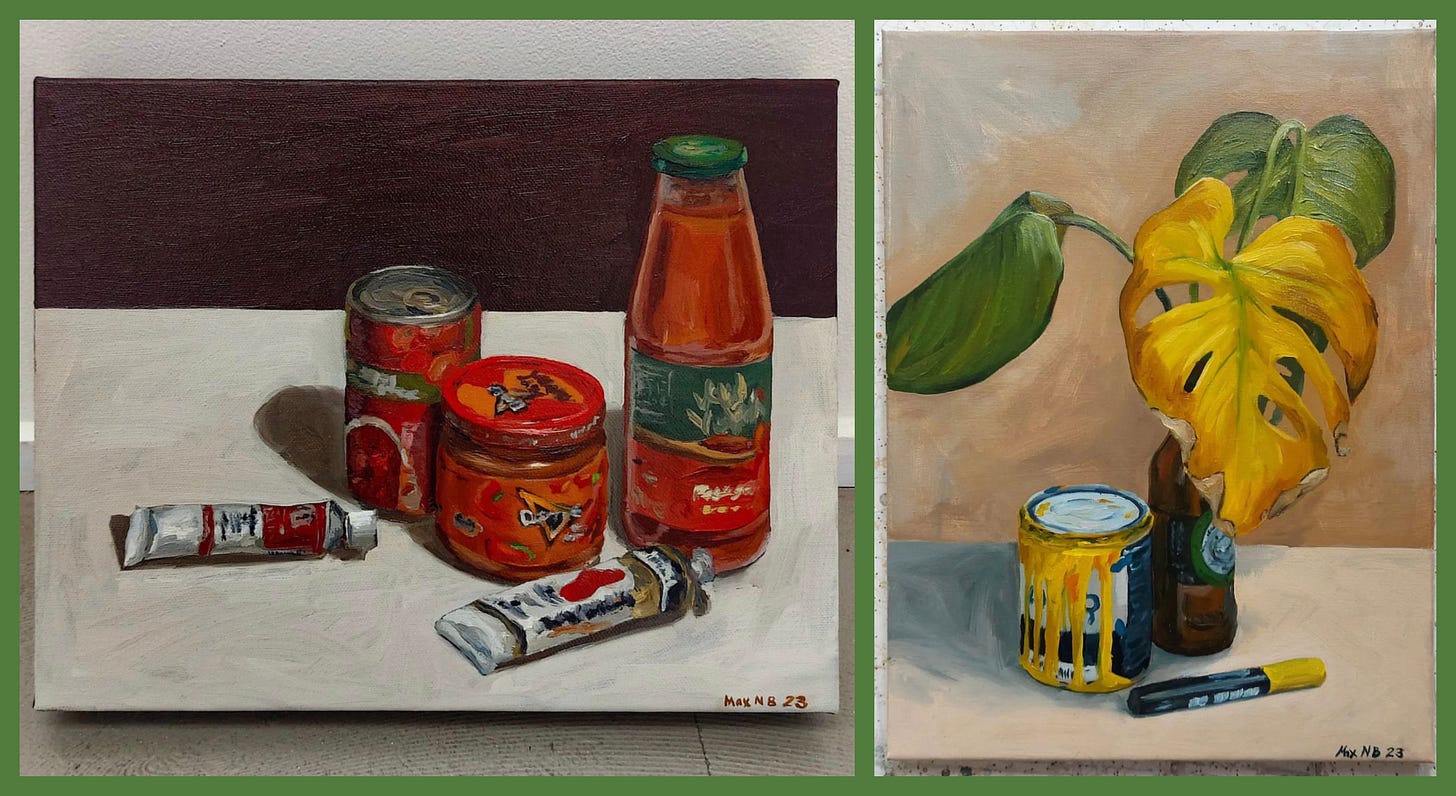
I encourage any readers currently unfamiliar with Max’s work to check him out for themselves. He has an exhibition opening on the 28th of March at Collective Haunt in Norwood, where you’ll be able to see some of the paintings featured in this article. Furthermore, he’ll be travelling to Melbourne in June for his first interstate exhibition.
If you attend one of his exhibitions this year, make sure to say hi to Max as well. He is not only a fantastic painter, but also a kind and endearing individual, with whom I am lucky to share a neighbourhood. I thank him again for taking the time to answer my questions.
This article was written, recorded, and edited on the traditional lands of the Kaurna People. The Infinite Rise observes that Country is central to the social, cultural and spiritual lives of Aboriginal people. Sovereignty was never ceded. Always was, always will be, Aboriginal Land.

